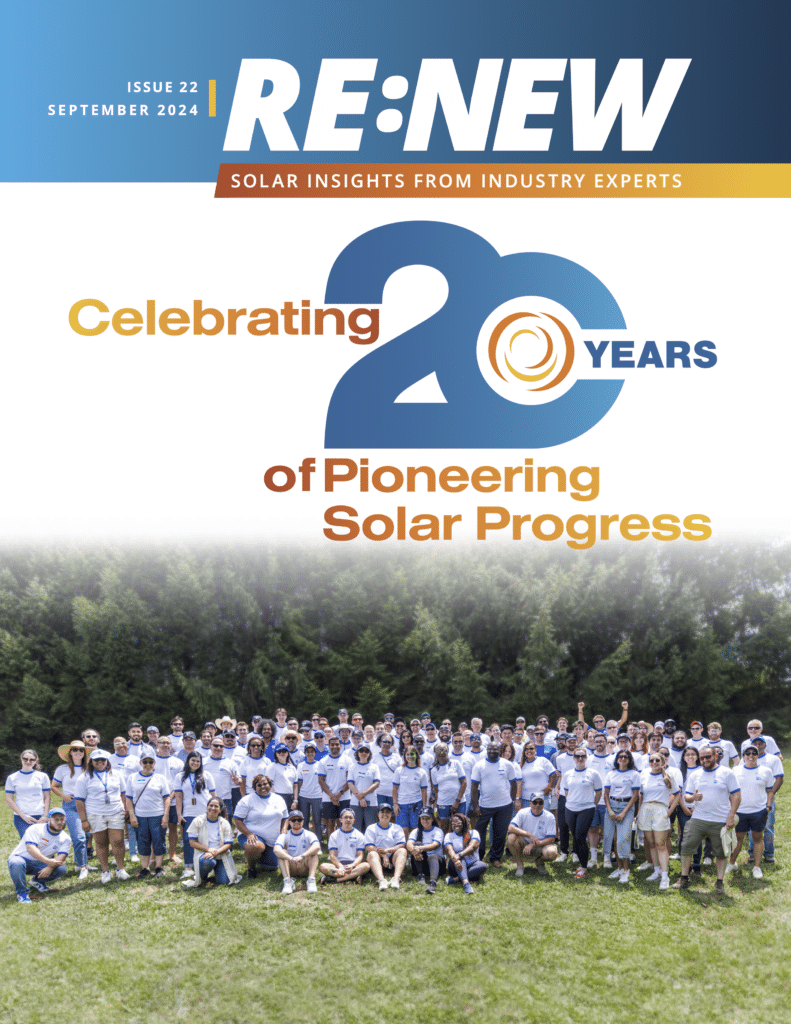Over the past several years, the Solar Energy Industries Association (SEIA) has taken significant steps to diversify the industry, such as a best practices guide and urging its members to sign on to the PWC CEO Action for Diversity & Inclusion Pledge. It has supported the U.S. Solar Diversity Study by The Solar Foundation (TSF) that uncovered the industry’s weaknesses in the area of diversity and subsequently has provided guidelines to help companies to address the shortcomings those studies in its Diversity Best Practices Guide for the Solar Industry.
Standard Solar has worked alongside SEIA and TSF in those efforts, co-sponsoring those studies and putting their recommendations into concrete efforts to diversify its work force. Our own efforts, including launching a Diversity and Inclusion Committee, are steps in the right direction—but there is still work to be done.
According to the U.S. Solar Diversity Study, “Hispanic or Latino workers represented 16.9% of the workforce, Asian workers represented 8.5%, and black or African American workers comprised 7.6%. Today, industry leaders are naming diversity, inclusion, and equity as top business priorities.”
“A career in solar is the world’s best kept secret in many ways,” says Paul Collins, an electrical preventative maintenance manager and Master Electrician at Vigilant Energy Management, a Standard Solar company. “We need to get the message out there to minority communities that working in the solar industry isn’t just a job, it’s a career.”
Part of the education process involves reaching out to high school and community college influencers like guidance counselors, teachers and professors, administrators and job-training centers to explain to them what the solar industry is all about.
Solar companies shouldn’t forget about using their own employees as resources to make those connections as well. After all, your own employees are already in the solar industry and may have connections that can bring you a host of qualified candidates from historically underserved populations.
“With all of the solar that’s going up on schools and in minority communities, we have a great opportunity to tap into those communities for workers,” Collins says. “First, we can bring them clean energy, and we can bring them well-paying jobs, too. It’s a win-win for everybody.”
It’s also important to educate influencers on the variety of jobs available in the industry. It’s not just installation jobs, after all. There are CEOs, finance, human resources and engineering jobs, just to name a few. In other words, the solar industry offers endless possibilities no matter what kind of career path someone wants to take.
“The solar industry has an opportunity to grow in ways that are almost unimaginable if we get creative about our outreach to minority communities,” Collins says. “We’re making good strides, but we can always do more.
“If we’re willing to invest the time, effort and money, we don’t have to hope to find the right candidates for jobs,” he adds. “We can create them from the ground up. That’s how you diversify the industry effectively.”
More Recent Blog Posts
The Politics of the Inflation Reduction Act: Standard Solar’s September Policy Brief
September 13, 2024
Trevor Laughlin · 4 min read
Community Solar, Front And Center: Standard Solar's August Policy Brief
August 12, 2024
Trevor Laughlin · 3 min read
A Mixed Legislative and Regulatory Landscape: Standard Solar’s July Policy Brief
July 15, 2024
Trevor Laughlin · 4 min read
Community Solar, Front And Center: Standard Solar's June Policy Brief
June 18, 2024
Trevor Laughlin · 3 min read
Most Popular Blog Posts
How To Create A Complete Commercial PV Design Package
CJ Colavito · 2 min read
New California Legislation Takes Community Solar Access to New Heights
Harry Benson · 2 min read
State Policy Leaps Into The Spotlight As Federal Policy Winds Down
Travis Tate · 2 min read
The Challenges of Finance and Interconnection Across Multiple States
Scott Wiater · 2 min read






Share